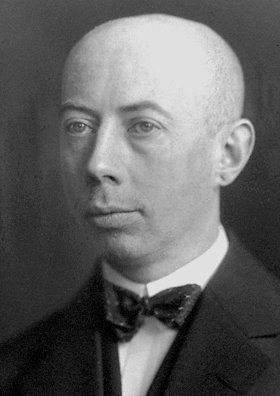Why was Gustav Hertz Awarded the Noble Prize for Physics in 1925?
Gustav Hertz: Pioneering Quantum Physics and Nobel Prize Recipient in 1925
Gustav Hertz, a German physicist, made significant contributions to the field of quantum physics during the early 20th century. Renowned for his experimental prowess and insightful interpretations, Hertz played a pivotal role in advancing our understanding of atomic behavior and the nature of electrons. In recognition of his groundbreaking research, he was awarded the Nobel Prize for Physics in 1925. This article explores the reasons behind Hertz’s prestigious honor and highlights his remarkable scientific breakthroughs.

The Franck-Hertz Experiment:
Gustav Hertz’s Nobel Prize was primarily awarded for his crucial role in the Franck-Hertz experiment, conducted in collaboration with James Franck. This experiment, carried out in 1914, provided groundbreaking evidence for the quantization of atomic energy levels, furthering the development of quantum mechanics.
In the Franck-Hertz experiment, Hertz and Franck bombarded mercury vapor atoms with electrons of varying energies. By studying the resulting collisions between electrons and atoms, they observed that when the electron energy matched specific thresholds, the atoms absorbed energy and emitted light. This confirmed the existence of discrete energy levels in atoms and validated the concept of quantized energy transitions.
Significance of the Franck-Hertz Experiment:
The Franck-Hertz experiment revolutionized our understanding of atomic behavior and was instrumental in the development of quantum mechanics. By providing empirical evidence for the quantization of energy levels, the experiment confirmed the validity of quantum theory, which had emerged from the works of Max Planck and Albert Einstein.
The experiment’s significance extended beyond energy quantization. It provided crucial insights into the behavior of electrons in the presence of electric fields and their interactions with atoms. The Franck-Hertz experiment offered a tangible demonstration of wave-particle duality, showcasing the dual nature of electrons as both particles and waves.
Impact on Quantum Mechanics:
Hertz’s work on the Franck-Hertz experiment had a profound impact on the field of quantum mechanics. It provided experimental support for the Bohr model of the atom, proposed by Niels Bohr, and laid the groundwork for further advancements in atomic and molecular physics.
The experiment’s findings also stimulated the exploration of quantum phenomena and paved the way for subsequent research into electron behavior, electron spectroscopy, and the study of energy quantization in various systems. Hertz’s work played a crucial role in shaping the quantum revolution that transformed our understanding of the microscopic world.
Recognition and Legacy:
Gustav Hertz’s Nobel Prize for Physics in 1925 recognized his exceptional scientific achievements and the significance of the Franck-Hertz experiment in quantum physics. The experiment provided compelling evidence for the quantization of energy levels in atoms and advanced our understanding of atomic behavior. Hertz’s contributions continue to inspire scientists, underscoring the importance of experimental rigor and empirical investigation in unraveling the mysteries of the quantum realm.
Conclusion:
Gustav Hertz’s Nobel Prize for Physics in 1925 celebrated his groundbreaking research and the seminal role he played in the Franck-Hertz experiment. His experimental prowess and insightful interpretations contributed to our understanding of the quantized nature of atomic energy levels and the behavior of electrons. Hertz’s work significantly influenced the field of quantum mechanics, laying the foundation for further advancements in atomic and molecular physics. His legacy serves as a testament to the transformative power of empirical research and the pursuit of knowledge in unraveling the fundamental principles of the universe.




